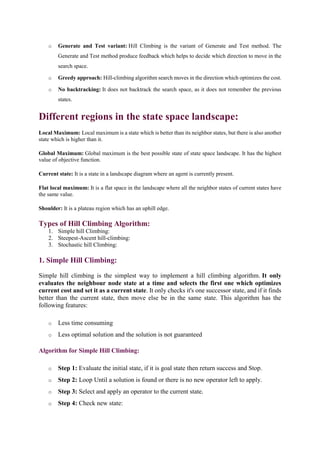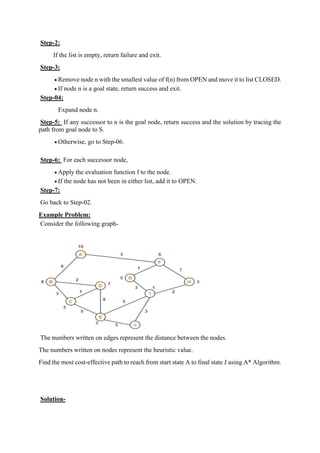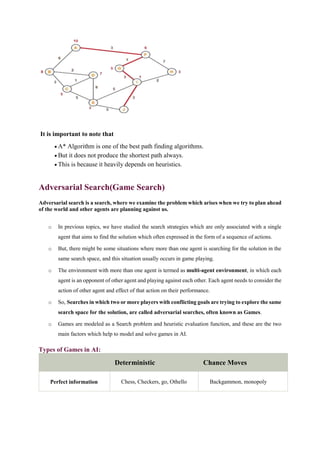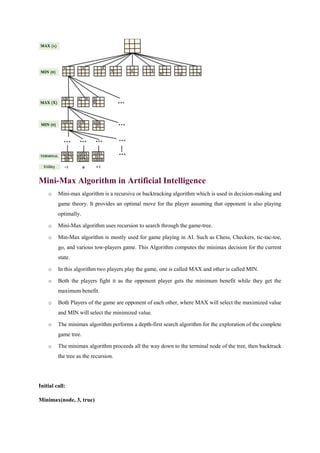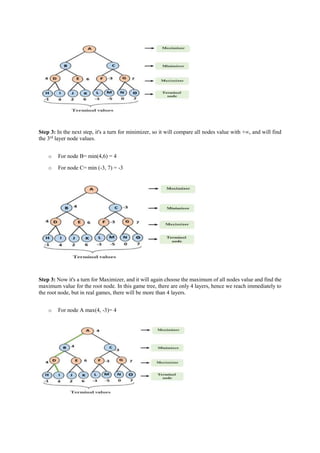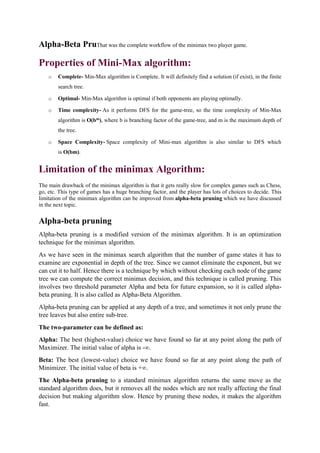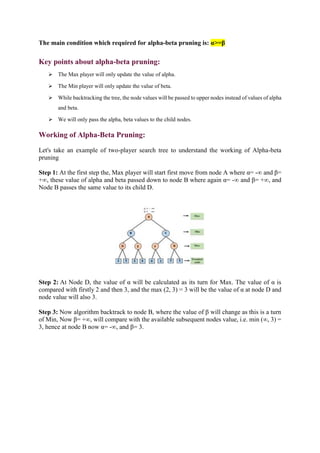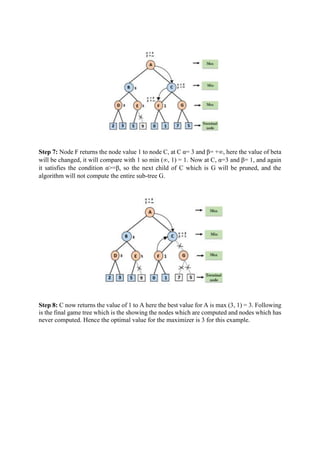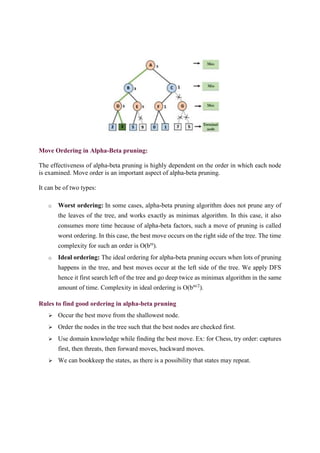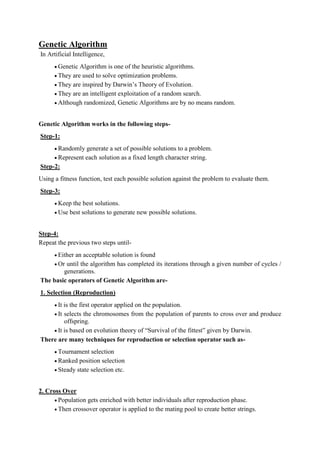Uninformed and informed search algorithms are used in artificial intelligence. Uninformed search methods like breadth-first search and depth-first search do not use additional problem knowledge to guide the search. Informed search methods like A* use a heuristic function to estimate the cost to reach the goal, guiding the search towards more promising solutions. The document provides details on various search algorithms, their time and space complexity, and how they traverse the problem space like using open and closed lists.
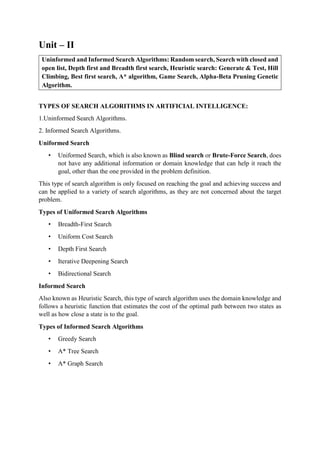



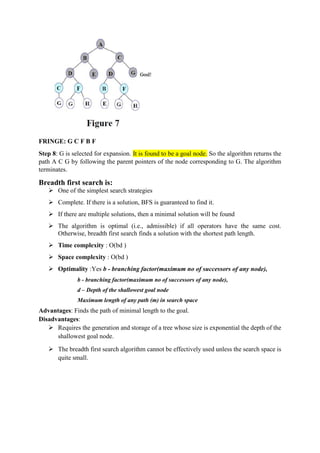


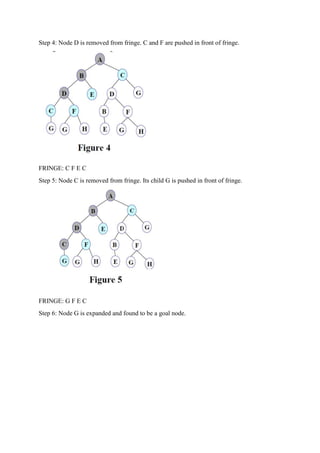
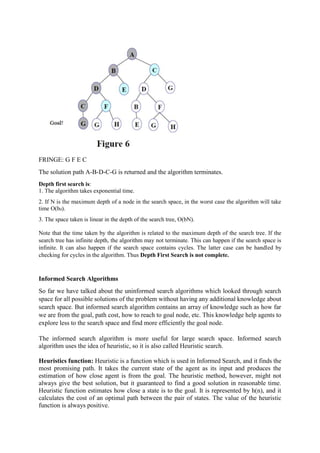
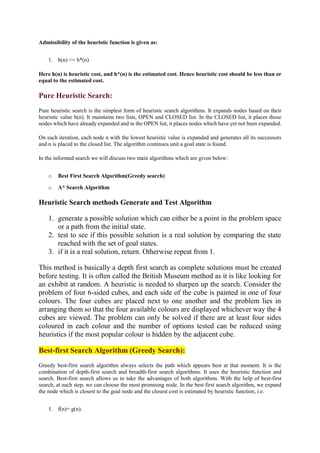

![In this search example, we are using two lists which are OPEN and CLOSED Lists. Following are the
iteration for traversing the above example.
Expand the nodes of S and put in the CLOSED list
Initialization: Open [A, B], Closed [S]
Iteration 1: Open [A], Closed [S, B]
Iteration 2: Open [E, F, A], Closed [S, B]
: Open [E, A], Closed [S, B, F]
Iteration 3: Open [I, G, E, A], Closed [S, B, F]
: Open [I, E, A], Closed [S, B, F, G]
Hence the final solution path will be: S----> B----->F----> G
Time Complexity: The worst case time complexity of Greedy best first search is O(bm
).
Space Complexity: The worst case space complexity of Greedy best first search is O(bm
). Where, m is the
maximum depth of the search space.
Complete: Greedy best-first search is also incomplete, even if the given state space is finite.](https://image.slidesharecdn.com/aiunit-2lecturenotes-230814044043-ca553073/85/AI-unit-2-lecture-notes-docx-12-320.jpg)

